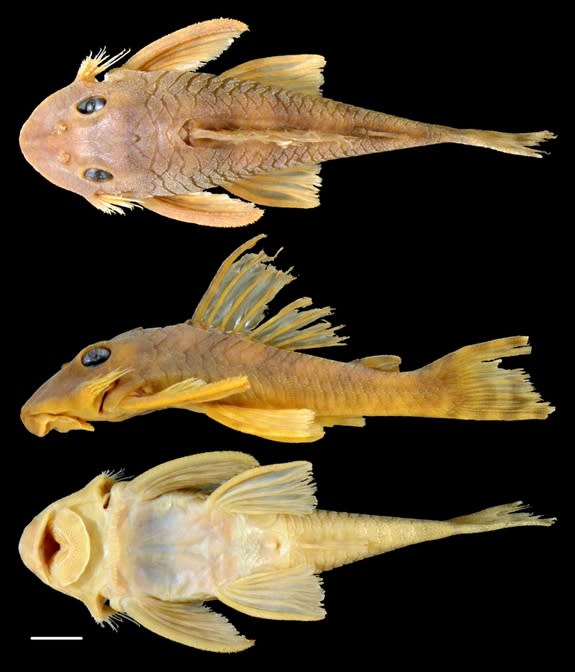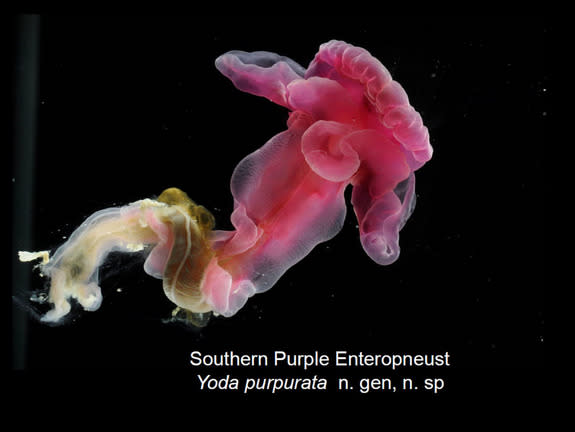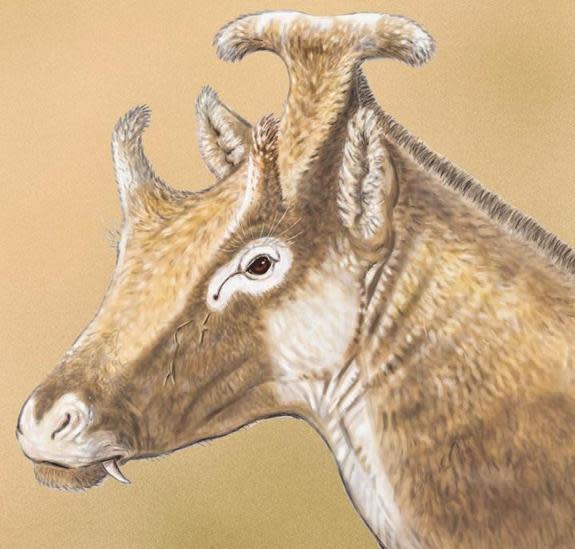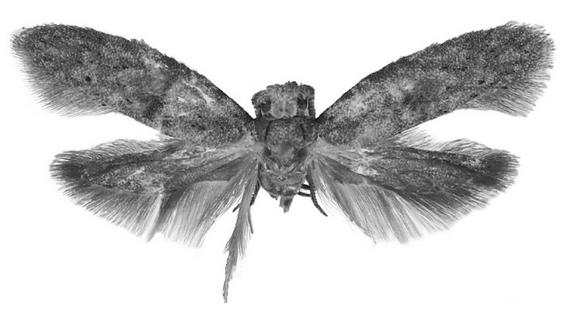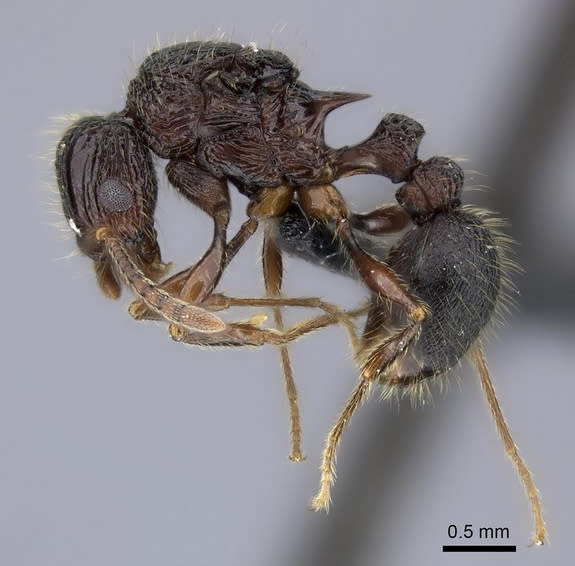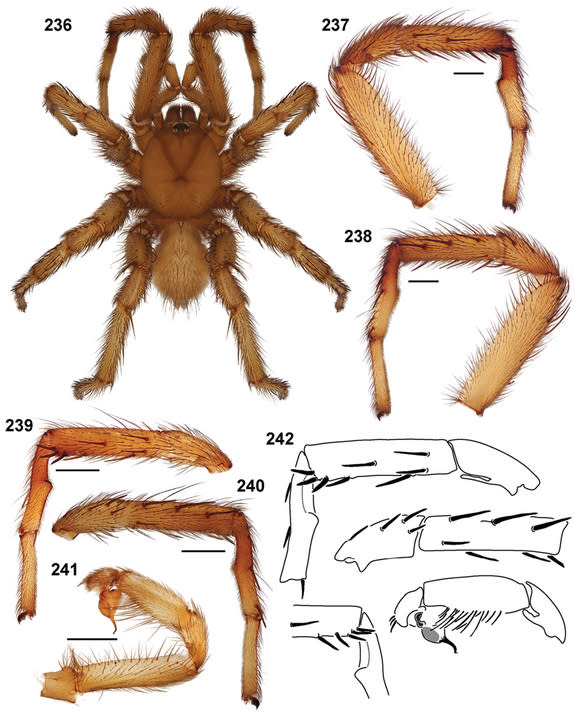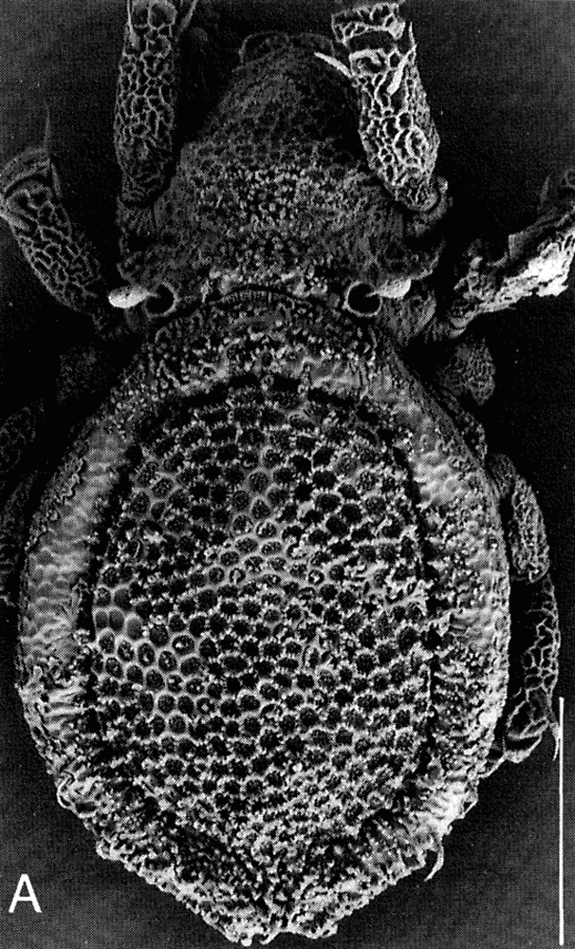7 Animals with 'Star Wars'-Inspired Names
The "Star Wars" universe looms large in the imaginations of generations of moviegoers. Die-hard fans show their devotion in many ways: Some line up for days to catch the movies' very first screenings, some dress in lovingly detailed and painstakingly designed costumes, and others incorporate movie memorabilia into their daily wardrobe and home decoration.
But some devoted "Star Wars" fans who also happen to be scientists go one step further, sharing their appreciation for the iconic movie series by giving its characters' names to newly discovered species.
Species' scientific names are in Latin and have two parts. Take our own scientific name, Homo sapiens, for example — the first part of the name, Homo, describes our genus, a grouping that includes our closest relatives. We share the Homo part of our scientific name with a number of early human species, including Neanderthals, or Homo neanderthalensis. [The 7 Most Misleading Animal Names]
The second part, sapiens, is specific to our species. When researchers find a new form of life, how they name it depends on what is already known about similar species. If it shares enough traits with a known genus, the scientist who discovered the new species starts there, selecting a species name that can reflect anything from the new species' looks to the scientist's favorite celebrity.
Though the process of naming a species has to follow certain rules, there's also room for adding a personal touch — or even a whimsical one. These "Star Wars"-inspired examples are the species you've been looking for.
All hail the queen
Impressive skull appendages in an extinct relative of the giraffe reminded paleontologists of Queen Padmé Amidala's swooping headgear in "The Phantom Menace," leading them to name their discovery Xenokeryx amidalae. Described in 2015 in the journal PLOS ONE, X. amidalae sports two ossicones — short horns like a giraffe's — and a sloping brow that rises steeply toward the back of its head. The slope is capped by a T-shaped structure that would look positively regal wrapped in a giant hairpiece and gilded with gold leaf. Image credit: Illustration by Israel M. Sánchez
Chewbacca moth
In 2009, scientists named a new species of moth after "the very large and hairy Wookiee character in the Star Wars movie series," they wrote in their paper in the journal Proceedings of the Entomological Society of Washington describing the discovery. Found in dry forests in western Mexico, the gray Wockia chewbacca is significantly smaller than its hirsute namesake. It does, however, appear to be quite fuzzy — if not quite a "walking carpet." Image credit: U.S. Department of Agriculture
Jedi ant
The Force is strong with Tetramorium jedi, an ant species that inhabits the lowland rainforests of Madagascar. The species was described in 2012 in the journal Zootaxa: "This new species is named after the fictional, noble, and wise guardians of peace from the 'Star Wars' universe created by George Lucas," the study's authors wrote in their paper. Image credit: Shannon Hartman / www.antweb.org
Sarlacc spider
Named for the fearsome, predatory desert creature inhabiting a Tatooine desert pit (and having a taste for fresh Jedi), the California trapdoor spider Aptostichus sarlacc was first described in the journal ZooKeys in 2012 as one of 33 new species in the Aptostichus genus. While A. sarlacc was the only one to get a "Star Wars"-inspired name, other species also described in the paper were named for magician Penn Gillette, photographer Dorothea Lange and President Barack Obama. Image credit: Jason Bond
Darth Vader mite
In 1996, findings published by the Australian Museum in Sydney added a new genus to a family of tree mites from eastern Australia, giving them the mite-y name Darthvaderum. A highly magnified scanning electron microscope (SEM) image of the mite's head reminded study author Glenn Hunt of the Dark Lord. "When I saw the SEM of the gnathosoma [a mite's mouth and feeding parts], I immediately thought of Darth Vader, evil antihero of Star Wars," Hunt wrote in the study. Image credit: Glenn Hunt
Yoda acorn worm
Scientists described the "purple Yoda," or Yoda purpurata, in the journal Invertebrate Biology in 2012, after finding the deep-sea acorn worm swimming near the North Atlantic seafloor. Acorn worms are so named for having an acorn-shaped front end, but the pronounced, floppy wings on either side of this worm's head region reminded researchers of Yoda's signature ears. Image credit: David Shale
Greedo catfish
The bulging-eyed, flat-headed catfish Peckoltia greedoi was described in a study published in ZooKeys in 2015. In the study, author Jonathan Armbruster wrote that the species was "named for Greedo of Rodia, a bounty hunter killed by Han Solo in Chalmun's Spaceport Cantina in "Star Wars: Episode IV – A New Hope." Armbruster added that the catfish and its bounty hunter namesake share "a remarkable resemblance." Image credit: Jonathan W. Armbruster
Follow Mindy Weisberger on Twitter and Google+. Follow us @livescience, Facebook & Google+. Original article on Live Science.
Copyright 2015 LiveScience, a Purch company. All rights reserved. This material may not be published, broadcast, rewritten or redistributed.

